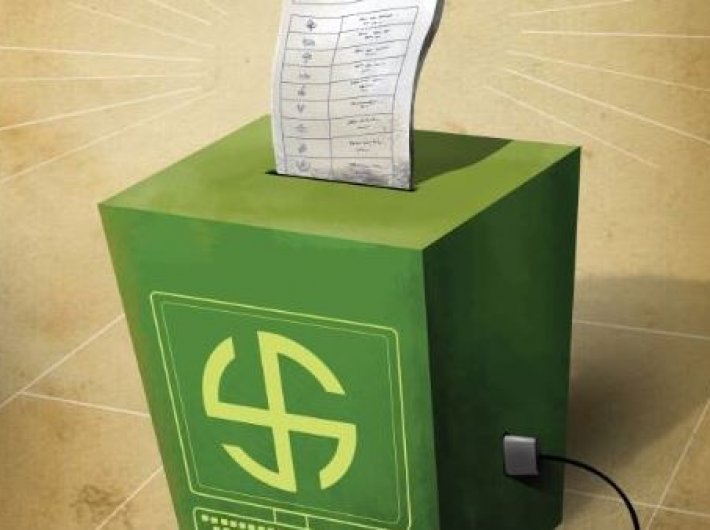The first-past-the-post system and proportional representation could soon become passé as a parliamentary panel is exploring other types of elections
India uses a mix of two systems in elections. The first-past-the-post system is used in the elections to the Lok Sabha as well as the state assemblies, while proportional representation is used during Rajya Sabha and presidential polls.
Now, an all-party Parliamentary panel is exploring “different systems of elections”, other than the first-past-the-post (FPTP) system, reported
Indian Express.
The Parliamentary Standing Committee on Personnel, Public Grievances, Law and Justice has sent a six-page “Questionnaire on Electoral Reforms” to all parties and the Election Commission.
Here is a brief explanation on the different types of polling in use in different parts of the world.
First-past-the-post: It is quite simple. The candidate getting the highest number of votes wins. It is easy to understand, unlike other systems. Besides India, the US, Canada and many African countries use it.
Single Transferable Vote: Winners are declared by fi rst determining the total number of valid votes cast, and then establishing a minimum number of votes that must be garnered based on the number of seats to be fi lled. Candidates who receive the number of first-preference votes needed to reach the quota are elected. If there are still seats to be filled, a two-step count occurs, said Canadian lawmaker Linda Duncan's
document.
Additional Member System: It is a mix of first-past-the-post constituencies and party lists. Voter are given two ballots. One has list of candidates from different parties and the voter marks their preferred candidate. The other is a list of parties with each party having a list of candidates in advance, which means that a vote for a party on the second ballot is a vote for their list of candidates.
The Alternative Vote Plus: It is once again a complicated system. Voters vote with the Alternative Vote and rank candidates in order of preference and then and then vote again on a small top-up list to make the overall result more proportional. With the top-up list, voters can either select their favourite party or choose their favourite candidate from the top-up list and the votes are then allocated to represent each party’s share of the votes proportionally, said
electoral-reform.org.uk.
Two-Round System: This is comparatively simpler to comprehend. Voters mark their preferred candidate. If one candidate wins half of the votes, he or she is elected. If not, a second ballot is held. In some countries only the top two candidates go to the second round.
Alternative Vote: This one is a bit of a challenge to understand. The voter puts a number for each candidate. The candidate who voters say is their favourite wins. If the half number is not reached, then your votes will go to the second favourite candidate. This continues till one candidate wins.
Supplementary Vote: This is a preferential voting system. Voters mark their preferences in to columns of boxes, with first box being for favourite candidate and the second box to mark the second favourite. All votes for favourite candidates are counted and if one candidate gets over half of the votes he or she is declared elected. In case, no candidate is able to cross the half way mark, then top two candidates continue in run-off round. This goes on till a candidate bags most votes, said electoral-reform.org.uk
Borda Count: This one is not too difficult to understand. This is a preferential voting system, with voters ranking candidates in order of preference and the rankings are converted into points. The candidate with the highest score wins. The system has been named after French mathematician Jean-Charles de Borda.
Party List Proportional Representation: It is hugely popular across the globe. In this, each area is quite large and elects a group of MPs. There is closed list and open list.
- Closed List: There is a list of party candidates for each area and on polling day, the ballot paper has a list of parties. Voters mark the party they support. Seats are filled by the party depending on an order they choose.
- Open List: Each party has a list of candidates. In some systems, voters get to choose an individual candidate. In others, voters can choose between voting for a party or their choice of candidate. A vote for a candidate is counted as a vote for their party when it is decided how many seats each party should receive.
